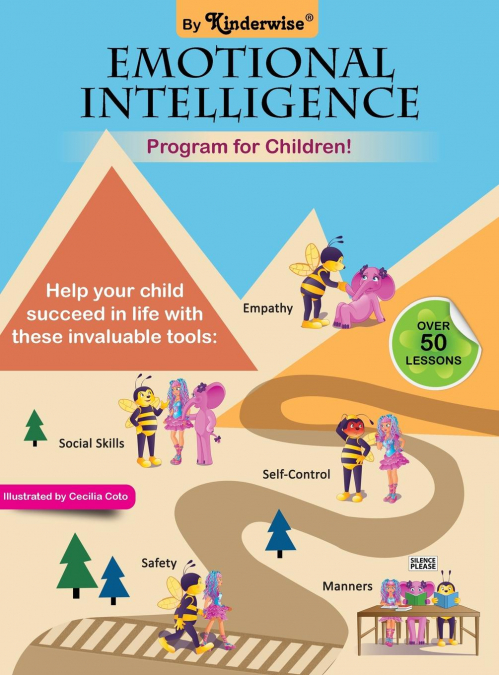
KINDERWISE
Award-Winning Finalist in the Parenting & Family category of the 2018 International Book Awards.The Emotional Intelligence Program for Children! is an innovative solution for parents and teachers concerned about the social readiness of young children. Classroom, playground, store, and home environments each present unique behavioral challenges for children and even experienced caregivers are often left feeling overwhelmed and exhausted!This program was written BY parents FOR parents and features 58 real-world lessons that can be used to immediately improve behavior (e.g. Do you want friends? Learn to share!). Each simple lesson is acted out by three cartoon characters representing shy, impulsive, and moderate personality types. Consideration for others along with positive benefits of good behavior are taught in a way that children can understand.Success in life is dependent on a number of factors. A high IQ is not enough. Emotional intelligence, the ability to identify and manage the emotions of oneself and others, is critical. Emotional intelligence is measured as EQ.Consider this: a high EQ may enable one to solve difficult puzzles and gain proficiency in the fields of math, science and language. Emotional intelligence, however, allows us to solve the HUMAN puzzle! A child or adult with high EQ will have empathy, friendships, self-awareness, self-control and be adept at conflict resolution. Research shows that children who exhibit proper behavior around others are more likely to be successful in life.In this book, the fictitious characters Sparkelina (a young girl), Busybee (a giant bee) and Sophie (a pink elephant) are discovering how best to behave in various social situations. Kids will smile as they learn by following the adventures of their favorite friends.This program includes all 5 books in the Kinderwise EQ book series: How to Describe My Feelings, How to Make and Keep Friends, How to Mind My Manners, How to Calm Down and How to Stay Safe. Where applicable, a "Suggested Reading Methods" page is included so that parents, teachers, and counselors may have a guide to establishing communication and interaction with young readers.